For many vintages now, the team at La Tulipe Rouge has been closely following the rise of Château Brane-Cantenac. For over 15 years, the wines of the estate—from the simple Margaux to the Grand Vin, including Baron de Brane—have asserted themselves in a style that rivals the finest classified wines of 1855. With an unparalleled precision, the château has managed to gain in concentration without losing its Margaux soul or its crystalline purity. It was time for us to take stock and understand the reasons behind the growing success of the "first among the second crus."
On the agenda:
- A podcast with the estate's operations director, Christophe Capdeville
- A review of the historical and technical fundamentals of the château, along with some anecdotes
- The results of a vertical tasting of the different cuvées
Enjoy listening and reading,
Olivier Borneuf
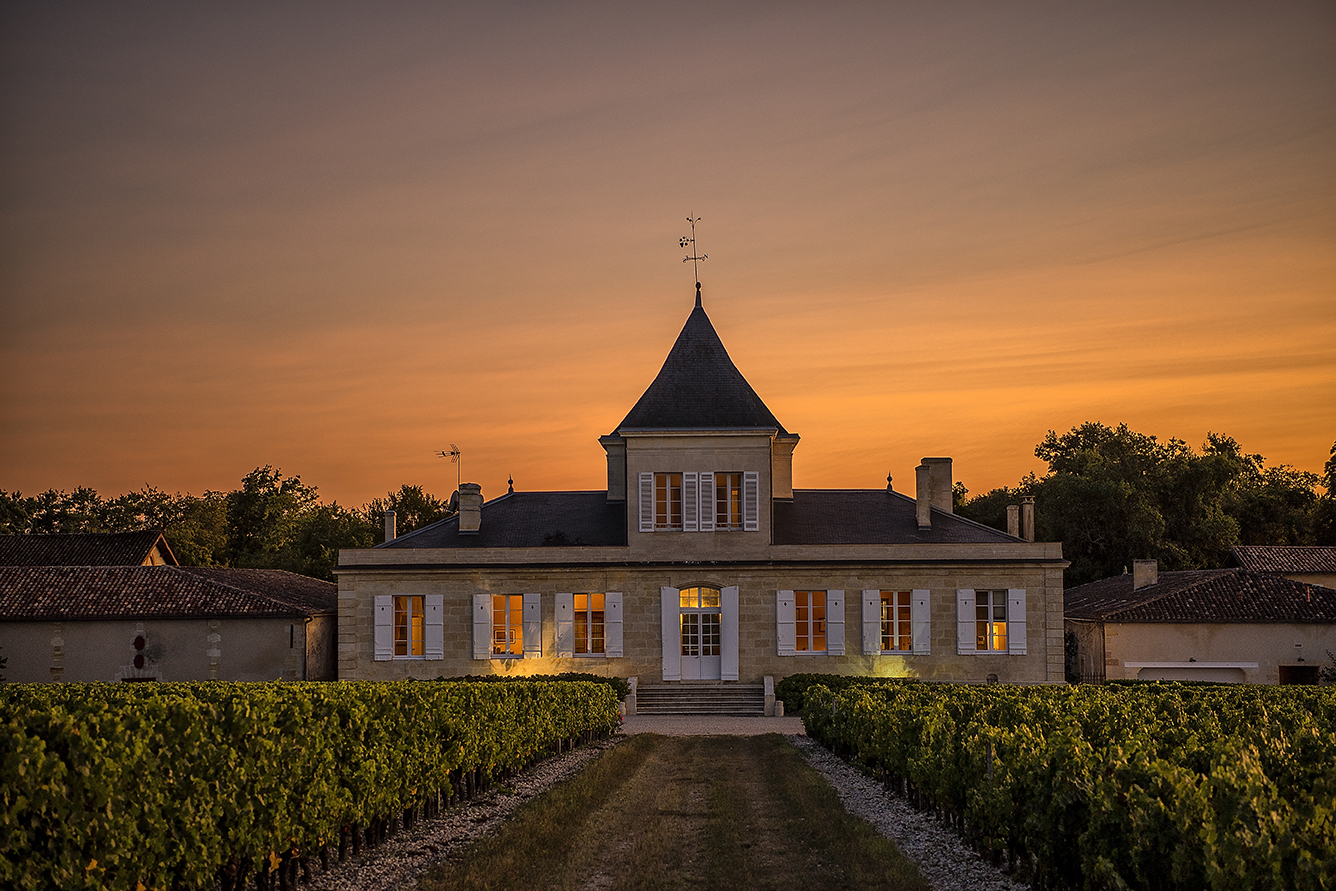
HISTORY
From Gorce to Brane
Château Brane-Cantenac was once known by the names of its proprietors, Hostein in the 17th century and Gorce in the 18th century. Long before the 1855 classification, its wines were already among the most renowned in the Médoc. By the end of the 18th century, the wine of Gorce was cited just after that of a certain Château Latour, located in Pauillac, and was appreciated for its exceptional bouquet.
The French Revolution marked a turning point for the Gorce family. Marie-Françoise de Gorce, left orphaned, struggled to preserve the estate before being forced to sell it in 1833 to Baron Hector de Brane, the former owner of the Pauillac estate Brane-Mouton (now Mouton-Rothschild). Shortly thereafter, his son, Jacques-Maxime de Brane, known as the "Napoleon of the Vines," took the reins. A visionary and audacious winemaker, he replanted the terroir with a majority of Cabernet Sauvignon and modernized the estate's infrastructure.
The First of the Second Crus
In 1838, Jacques-Maxime de Brane renamed the estate, attaching his name to that of the village, thus creating Brane-Cantenac. A pioneer in the Médoc, he was the one to introduce Cabernet Sauvignon to the region, helping to shape the estate's viticultural identity. In his writings, he declared: "Whether by weakness or pride, I have faith in my name and choose to give Gorce the name of Brane-Cantenac." The estate was classified as a Second Grand Cru in 1855, confirming the excellence of its wines.
In 1866, after a lifetime dedicated to viticulture, the Baron sold Brane-Cantenac to the Berger family. The deed of sale specified "first among the second crus," marking the recognition of its production. Monsieur Berger continued the Baron's work with brilliance, elevating Brane-Cantenac to the top, even rivaling the illustrious Château Margaux.
The Arrival of the Lurton Family
The First World War plunged the estate into a difficult period, forcing the Berger family to sell it in 1920 to the Société des Grands Crus de France. In 1925, this society was dissolved, and Léonce Récapet, one of the shareholders, retained Brane-Cantenac along with part of Château Margaux. A former distiller from Entre-deux-Mers, he managed to maintain the estate's quality despite economic challenges, with the help of his son-in-law, François Lurton.
After World War II, François Lurton sold his shares in Château Margaux but kept Brane-Cantenac, which he passed on to his son Lucien in 1954. A passionate agricultural engineer, Lucien Lurton restored Brane-Cantenac to its former glory while acquiring other vineyards, convinced of the primacy of terroir.
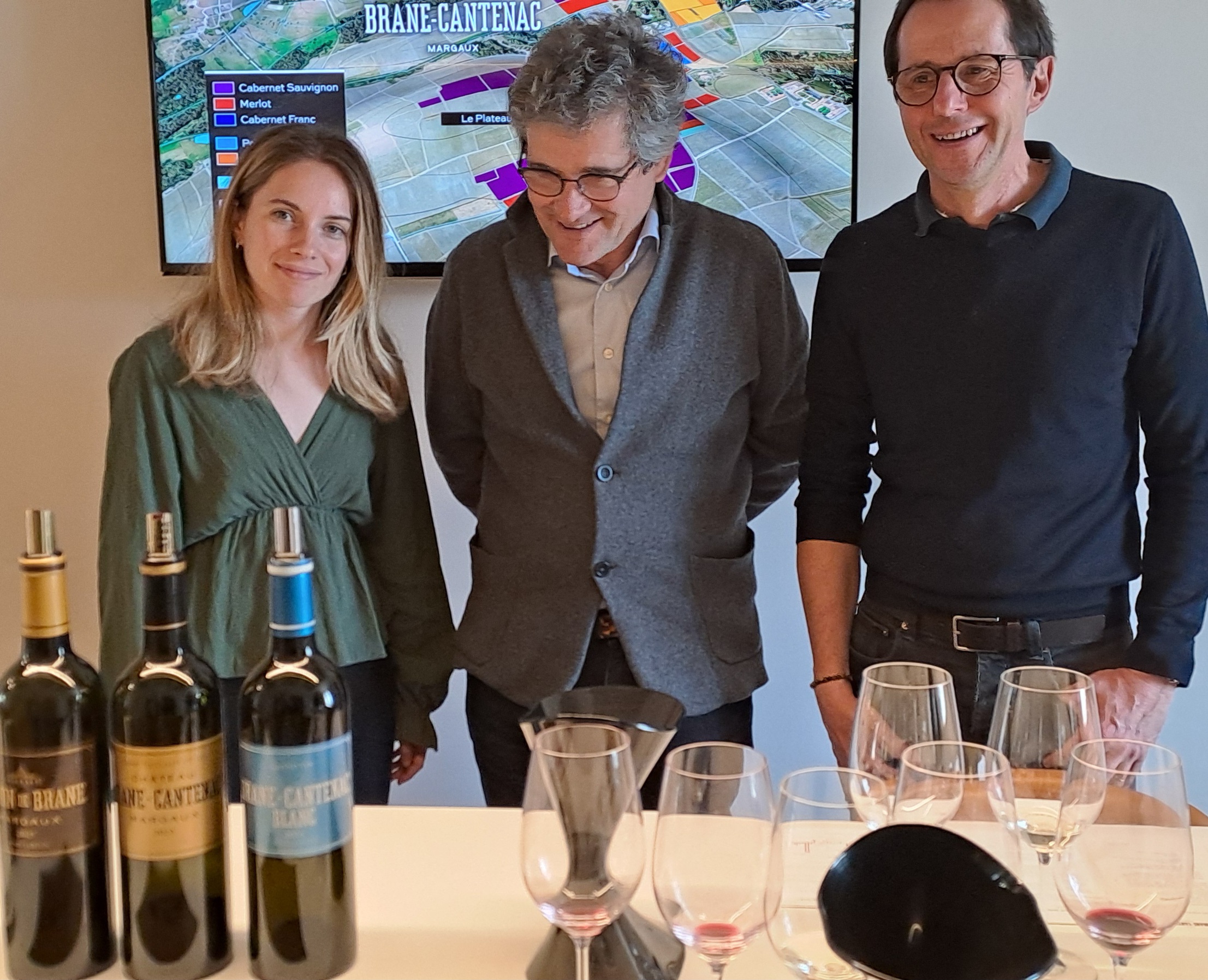
Madeleine Lurton, Henri Lurton and Christophe Capdeville
Today
In 1992, at the peak of his career, Lucien Lurton passed on his estates to his children, entrusting Brane-Cantenac to Thierry, Edwige, and Henri. The latter was also appointed estate manager. Henri Lurton, born in 1961, grew up at Brane-Cantenac alongside his ten siblings and parents. Passionate about viticulture from an early age, he pursued studies in vineyard science. Holding a master’s degree in biology, a DEA in oenology and ampelography (researching vineyard soils under Professor Seguin), and an oenology diploma from the University of Bordeaux, he spent his free time working at the estate. To perfect his knowledge, he gained experience in South Africa, Australia, and Chile before dedicating himself fully to the family property.
In 2007, he bought out Thierry and Edwige’s shares, becoming the sole owner. The year 2022 marked his thirtieth vintage. It was also the year he passed the estate on to his children, while retaining management, after over three decades of complete devotion to Brane-Cantenac’s vineyard.
Sources:
- Les richesses gastronomiques de la France. Les vins de Bordeaux / texte by Charles de Lorbac (Ch. Cabrol) ; illustrared by Charles Lallemand 1868
- Les grands crus bordelais : monographies et photographies des châteaux et vignobles. Partie 1 / Alfred Danflou 1867
THE TERROIR
The Brane Plateau: The Essential "Terrace IV"
A detailed analysis of the soils reveals a common denominator among the greatest terroirs of the Médoc: Terrace IV. This terrace is the fourth chronologically deposited by the river during the Quaternary period, among six identified. It characterizes 100% of the grapes that constitute the grand vin of Château Brane-Cantenac.
It is distinguished by a surface layer of sandy soil, predominantly composed of large gravel, and a deep subsoil consisting of the same gravel but with a high proportion of clay (between 10% and 20%). This specific combination provides optimal growth conditions for the vine. A superficial drainage system limits the effects of heavy rainfall, while deep water retention and its gradual release allow adaptation to severe droughts. This constant but minimal water supply ensures stability throughout the year, regardless of vintage variations.
THE CELLAR
In 1999, a winery and vat room were designed according to ecological principles. Then, in April 2023, the château embarked on ambitious renovations, aiming to refurbish the 400m² barrel cellar and expand one of its wooden vat rooms. Numerous tools and technical innovations were implemented, with the objective of broadening possibilities rather than relying solely on modernity. Here are some examples:
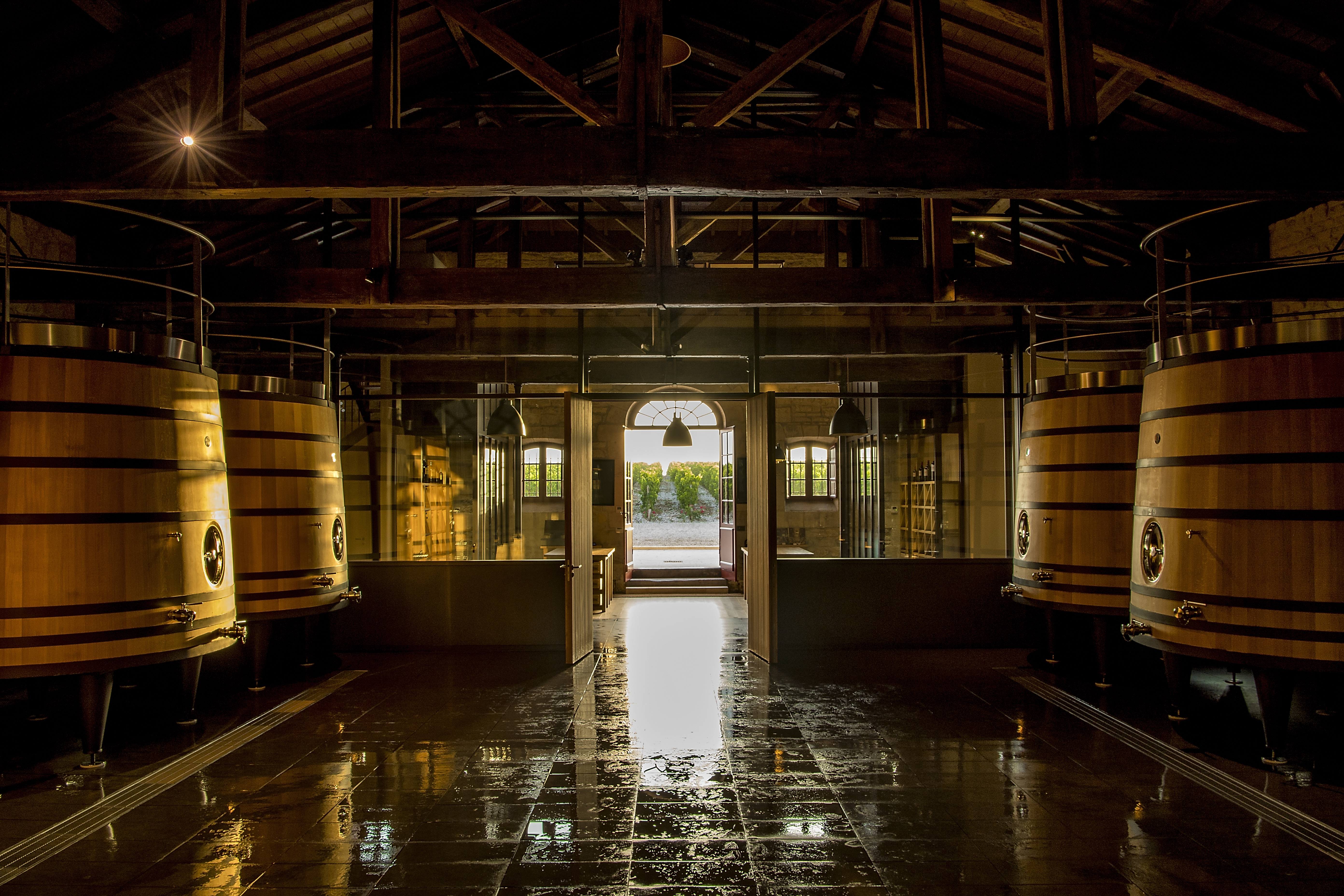
Temperature and Humidity Control
A ventilation system with forty air vents was installed to homogenize the temperature and prevent thermal gradients. This gentle system prevents drying out and maintains adequate humidity. Additionally, the château opted for free-cooling, a ventilation method that uses outside air when it is cooler than the indoor temperature. This eco-responsible technique naturally regulates the cellar’s temperature.
Wine contracts when exposed to cold, while humidity causes barrels to expand, creating depressions that can lead to oxygen ingress. While oxygen can stabilize wine through micro-oxygenation, it can also encourage unwanted microorganisms, altering the wine’s aromatic profile. The renovation of the cellar was therefore designed to integrate these two parameters, ensuring they are controlled to produce wines of the highest precision.
Wine extraction management
The château has adopted an innovative technique to optimize wine extraction: R'Pulse. This method consists of injecting high-speed air into the vat using a turbine, creating a vortex movement caused by the resulting vacuum, which completely breaks up the cap of grape solids. This process allows for maximum utilization of the cap, optimizing extraction and producing wines that are denser, more structured, and more full-bodied. Since generalizing this technique in 2019, the château has not only improved the quality of its free-run and press wines but also achieved significant time savings, reducing the mixing process from 50 minutes to just 3 minutes per vat, as well as water savings for equipment cleaning.
During extraction periods, the vats are tasted daily by the cellar master and operations director Christophe Capdeville, in order to adjust and implement the best process based on the vat’s needs. The use of R'Pulse requires in-depth expertise from the teams, as decisions are made based not on calculations but on repeated tastings, drawing on extensive experience with the wines. Combined with punching down and rack-and-return techniques, R'Pulse has enabled the château to concentrate its wines without losing the extraordinary precision that characterizes them.
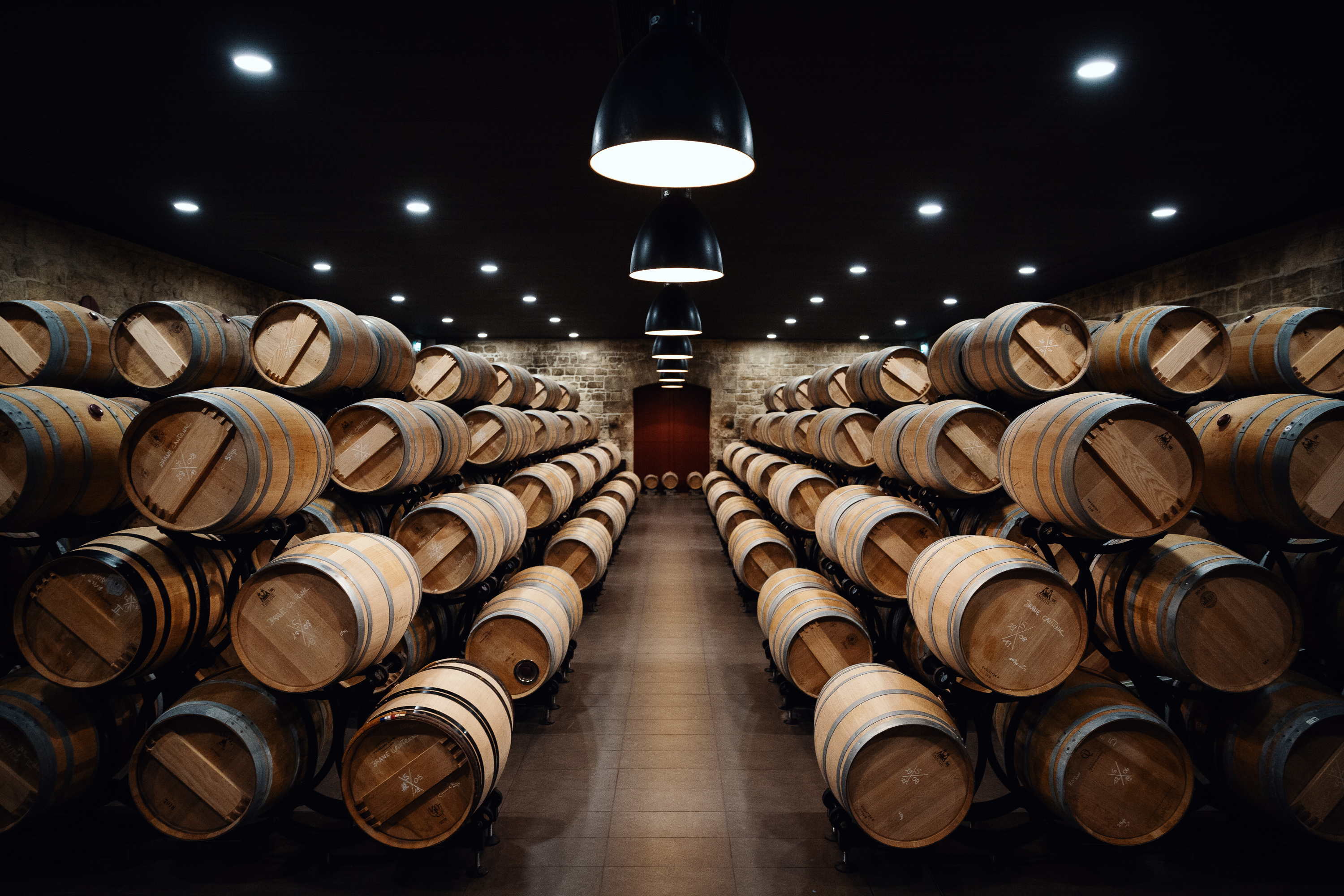
Aging
Aging stabilizes the results of extraction, particularly the color compounds, and enhances the tannic structure of the wines, making them silkier. As an active vessel, the barrel enriches the wine with compounds throughout the aging process.
To ensure aromatic complexity without overwhelming the wine with unsuitable woody aromas, meticulous selection of cooperages is carried out. Currently, eight coopers supply barrels made exclusively from French oak, with 28 different specifications based on wood grain, origin, toasting duration and intensity, and drying time. Each year, 28 barrels are filled for an 18-month aging period, allowing for precise expertise and comparative tastings up to three years after bottling.
This rigorous selection is tailored to the specificities of each vintage, with toasting adjusted just before harvest to optimize aging. A test conducted with cooper Seguin-Moreau, based on a scientific study by the ISSV*, has refined the temperature/time coupling. The selection of barrel heads, which account for 25% of the contact surface, is also crucial to ensure optimal characteristics. Thanks to this demanding selection process, using 100% new oak for the Grand Vin (30% for Baron de Brane) results in denser, more complex wines while perfectly controlling the unwanted markers of oak.
Finally, the introduction of the Wineglobe (a modern version of the traditional demijohn), which represents 5 to 10% of the final blend for Baron de Brane, aims to preserve the wines’ freshness and aromatic profile. This vessel effectively stabilizes color compounds and reduces sulfur doses thanks to its reductive properties, making it a more suitable alternative than amphorae. Its transparency also provides a valuable visual tool for observing the wine’s evolution while respecting the natural waves that influence fruit maturation.
*Institute of Vine and Wine Sciences.
BRANE-CANTENAC IN NUMBERS
Surface Area
85 hectares, including 69 ha of red vines and 3 ha of white vines
Vineyard Composition
Red: 55% Cabernet Sauvignon, 39% Merlot, 4% Cabernet Franc, 1% Petit Verdot, 0.6% Carménère, and 0.4% Malbec.
White: 75% Sauvignon Blanc, 25% Sémillon
Average Vine Age: 40 years. 46% of the Brane plateau (66% Cabernet Sauvignon) has an average age of 70 years.
Harvesting: Manual for the entire vineyard
Biodiversity
15% of the estate is dedicated to biodiversity.
1,000 m² of ecological refuges created with 2,142 plants.
Permanent Staff
37 employees, including 16 women and 21 men
Anecdotes from the Vineyard
The “Durand” parcel is named in tribute to Monsieur Durand, the vineyard pruner.
The “Pontac” parcel is named in honor of the De Pontac family, the first owners. The Pontac family played a key role in the creation of great wines in the 17th and 18th centuries (Haut-Brion, Lafite, Latour). Arnaud de Pontac was the pioneer of the concept of a “Cru” linked to a specific terroir.
The “Vigne Blanche” parcel, formerly planted with white grapes, is now the estate’s finest Cabernet Sauvignon parcel.
The “Allemands” parcel was named at the end of World War II when German prisoners were detained at Brane and worked in the vineyards. One of them, suffering from polio, became the family’s cook and never left.
The “Champs de Bataille” parcel… Legend has it that the Baron de Brane was slapped by his mistress—a singer from the Grand Théâtre—in front of this very plot.
VERTICAL TASTING
The wines were tasted blind, without knowledge of the technical details listed below, to avoid influencing the assessment.
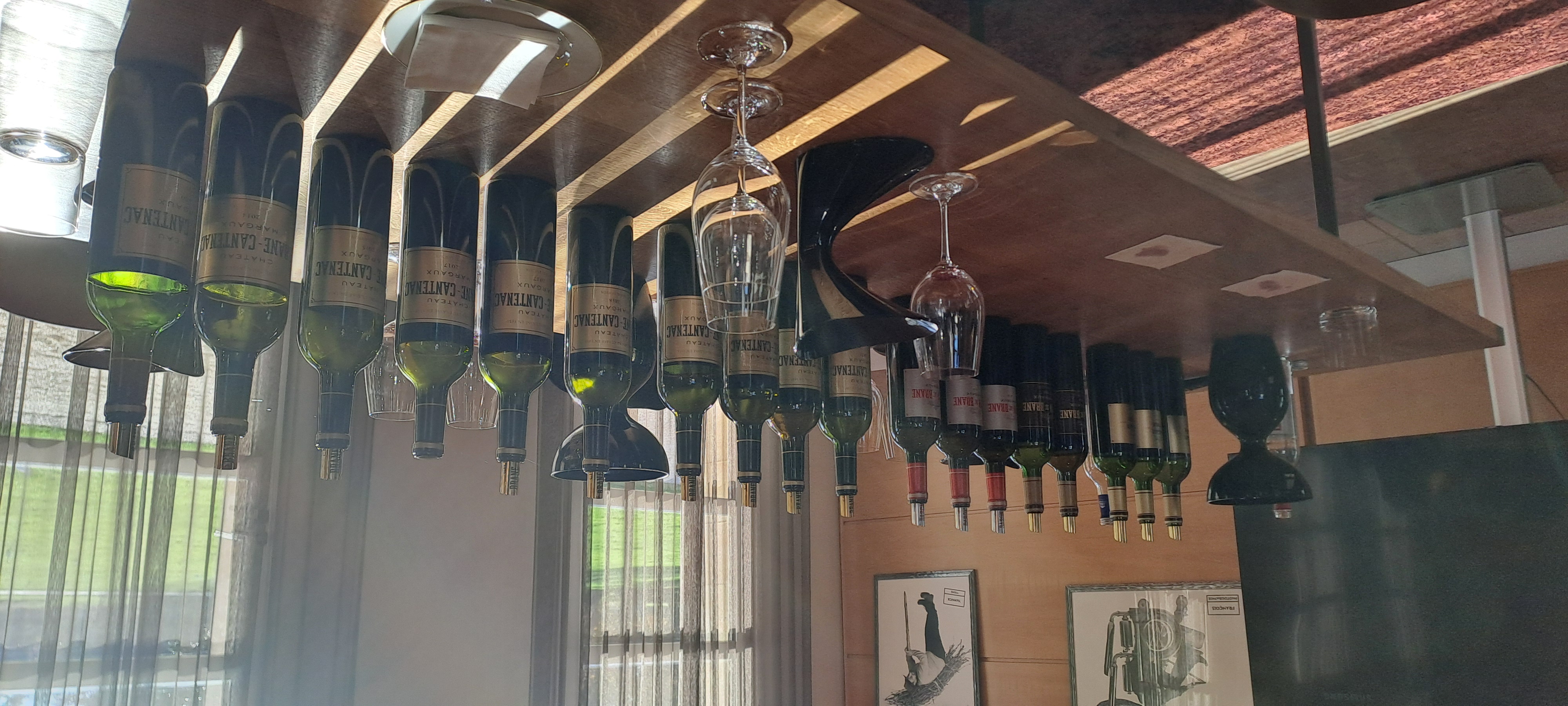
Key Takeaways
- Consistency in excellence: Every vintage over the past 15 years has lived up to the estate’s reputation.
- The "first among second crus" maintains its rank and occasionally rivals some First Growths.
- A constantly evolving estate: Over the years, Brane continues to refine details (harmony, aging, tannins, mid-palate, etc.).
- Technique serving sensitivity: The aesthetic sense behind each technical decision gives the Grand Vin an undeniable extra soul.
- Brane is a pure Margaux: If Margaux embodies a harmonious blend of finesse in both aroma and tannins, along with concentrated structure, then Brane fully represents the appellation.
- A must-have! While the Grand Vin is an excellent investment, the "second wine" Baron de Brane is a fantastic deal… Take note!
THE VERTICAL TASTING
2010 According to the Château
A dry year, but with well-replenished water reserves from the previous autumn. The cool nights of a beautiful summer contributed to an outstanding aromatic expression and an unusually high phenolic richness. The 2010 climate was perfectly suited to Brane’s terroir. The clay-gravel subsoil of the plateau was able to provide the necessary moisture for optimal grape maturation despite the intense drought. Aromatic expression at Brane was particularly rich this year.
Harvest dates: September 27 – October 14
Château Brane-Cantenac 2010:
• NOTE TULIPE ROUGE
• 62% Cabernet Sauvignon, 30% Merlot, 8% Cabernet Franc
• Alcohol: 13.5% | pH: 3.7
2011 According to the Château
A very cold winter followed by an exceptionally warm and sunny spring promised a generous and early vintage. However, 2011 proved challenging throughout the vegetative cycle. A violent hailstorm struck the vineyard on June 4, followed by prolonged drought, only to be replaced by a significant cooling in July and rainfall in August. Two key factors ensured high-quality wines: the water reserves in Brane’s plateau soils, which protected vines from spring drought stress, and the use of optical sorting.
Harvest dates: September 9 – October 10
Château Brane-Cantenac 2011:
• NOTE TULIPE ROUGE
• 56% Cabernet Sauvignon, 37% Merlot, 6% Cabernet Franc, 1% Carménère
• Alcohol: 13% | pH: 3.75
2014 According to the Château
Flowering was remarkable—quick and efficient—but veraison was more uneven, affected by a summer often gray and stormy. Fortunately, a spectacular late-season turnaround brought sunshine, warmth, and light! The Cabernet Sauvignons reached the level of a truly great vintage: berry growth was halted after summer rains, and an extended ripening cycle allowed them to fully benefit from the late-summer sunshine. The top Merlots from the plateau, integrated in smaller quantities than usual, contributed roundness and aromatic richness to the blend.
Harvest dates: September 22 – October 17
Château Brane-Cantenac 2014:
• NOTE TULIPE ROUGE
• 77% Cabernet Sauvignon, 21% Merlot, 2% Cabernet Franc
• Alcohol: 13% | pH: 3.73
2015 According to the Château
The year 2015 was a gift from nature, combining characteristics of two other exceptional vintages. Ideal weather conditions throughout the vine’s cycle particularly benefited the Margaux appellation during ripening. The harvest took place under perfect conditions, allowing each grape variety and plot to be picked at optimal ripeness. The wines exhibit great aromatic richness and a splendid tannic structure, ensuring exceptional aging potential.
Harvest dates: September 17 – October 19
Château Brane-Cantenac 2015:
• NOTE TULIPE ROUGE
• 70% Cabernet Sauvignon, 26% Merlot, 3% Cabernet Franc, 1% Carménère
• Alcohol: 13.6% | pH: 3.78
2016 According to the Château
2016 was both a dry and paradoxically abundant vintage. Luck played its part during flowering, with a sudden meteorological improvement. Another stroke of luck came in mid-September with a beneficial rainfall that reignited grape maturity. The Cabernets from the Terrace IV plateau were absolutely magnificent, thanks to the exceptional drought resistance of this terroir. Perhaps the greatest Brane ever produced!
Harvest dates: September 22 – October 17
Château Brane-Cantenac 2016:
• NOTE TULIPE ROUGE
• 70% Cabernet Sauvignon, 27% Merlot, 2% Cabernet Franc, 1% Carménère
• Alcohol: 13.3% | pH: 3.69
2017 According to the Château
Frost had uneven consequences across the vineyard, with some sectors escaping damage while others suffered significant crop losses. The finest parcels, located on the Brane plateau and Carabin, were spared, while those behind the park experienced severe losses. Despite the challenges, 2017 produced outstanding wines: the Brane-Cantenac blend, sourced exclusively from frost-free parcels, remains in line with the two previous vintages. The separate harvest of first- and second-generation grape clusters from frost-affected vines allowed for the production of exceptional second wines.
Harvest dates: September 14 – October 2
Château Brane-Cantenac 2017:
• NOTE TULIPE ROUGE
• 74% Cabernet Sauvignon, 21% Merlot, 4% Cabernet Franc, 1% Petit Verdot
• Alcohol: 13% | pH: 3.66
2018 According to the Château
An unprecedented mildew challenge required extreme vigilance. The estate combated this threat with the most natural strategies possible while minimizing copper use, as excessive doses can sterilize soils. The exceptional summer naturally resulted in an outstanding vintage. The vines avoided suffering from drought thanks to high water tables at the start of the season and the good water retention of the estate’s clay-gravel soils.
Harvest dates: September 17 – October 11
Château Brane-Cantenac 2018:
• NOTE TULIPE ROUGE
• 74% Cabernet Sauvignon, 23% Merlot, 2% Cabernet Franc, 1% Petit Verdot
• Alcohol: 13.5% | pH: 3.78
Baron de Brane 2018:
• NOTE TULIPE ROUGE
• 60% Merlot, 34% Cabernet Sauvignon, 4% Cabernet Franc, 2% Carménère
• Alcohol: 14% | pH: 3.61
2019 According to the Château
2019 was the year of the greatest terroirs. At Brane, the clay-gravel subsoil of Terrace IV allowed for extraordinary grape maturation. Only parcels from this terrace were selected for the Grand Vin. 2019 was a very warm year. A mild winter led to early budbreak, while flowering occurred in early June under cool and humid conditions. The summer saw two heatwaves, creating a significant water deficit that halted vegetative growth and promoted grape maturation. Thanks to cool summer nights and favorable September weather, the grapes reached an ideal balance of aromatics and acidity.
Harvest dates: September 18 – October 9
Château Brane-Cantenac 2019:
• NOTE TULIPE ROUGE
• 70% Cabernet Sauvignon, 26% Merlot, 2% Cabernet Franc, 1% Petit Verdot, 1% Carménère
• Alcohol: 14% | pH: 3.72
Baron de Brane 2019:
• NOTE TULIPE ROUGE
• 54% Merlot, 45% Cabernet Sauvignon, 1% Cabernet Franc
• Alcohol: 14% | pH: 3.71
2020 According to the Château
A mild winter brought above-normal temperatures (+2.5°C). Flowering was very early under warm spring conditions, and a 53-day drought from June 16 to August 10 followed, with no rainfall. This vintage combines remarkable concentration (with record IPT values) and exceptional tannin suppleness. Fruit expression is vibrant, and ripeness is balanced by freshness, maintained thanks to the cool nights of September. Yields were low due to imperfect flowering, which led to fewer but smaller grapes. Recent dry years have further emphasized the wines from Terrace IV, with its more clay-rich gravels.
Harvest dates: September 14 – October 30
Château Brane-Cantenac 2020:
• NOTE TULIPE ROUGE
• 70% Cabernet Sauvignon, 26% Merlot, 2% Cabernet Franc, 1% Petit Verdot, 1% Carménère
• Alcohol: 13.5% | pH: 3.71
Baron de Brane 2020:
• NOTE TULIPE ROUGE
• 58% Merlot, 34% Cabernet Sauvignon, 6% Cabernet Franc, 2% Petit Verdot
• Alcohol: 14% | pH: 3.71
Margaux de Brane 2020:
• NOTE TULIPE ROUGE
• 64% Merlot, 36% Cabernet Sauvignon
• Alcohol: 14% | pH: 3.77
2021 According to the Château
A vintage of strong contrasts, 2021 required constant adaptation to climatic challenges: frost, spring rains, a gloomy summer, and a late yet intense summer drought. Every parcel was carefully managed to ensure optimal grape health and maturity. Cabernet Sauvignon and Merlot responded well to the year’s conditions, producing deeply colored, fruit-forward wines with elegant, precise tannins and a remarkable balance between richness and acidity. In the cellar, gentle extractions contributed to refined structures.
Harvest dates: September 23 – October 7
Château Brane-Cantenac 2021:
• NOTE TULIPE ROUGE
• 74% Cabernet Sauvignon, 22% Merlot, 2% Cabernet Franc, 1% Petit Verdot, 1% Carménère
• Alcohol: 12.7% | pH: 3.66
Baron de Brane 2021
• NOTE TULIPE ROUGE
• 50% Merlot, 46% Cabernet Sauvignon, 3% Cabernet Franc, 1% Petit Verdot
• Alcohol: 12.9% | pH: 3.63
Margaux de Brane 2021
• NOTE TULIPE ROUGE
• 35% Merlot, 65% Cabernet Sauvignon
• Alcohol: 12.7% | pH: 3.7
2022 According to the Château
Meteorological conditions in 2022 were exceptionally favorable for quality. The winter was mild with relatively low rainfall. The vineyard’s growing season was particularly dry and warm, marked by greater-than-usual sunshine, significantly lower precipitation (-25%), and three successive heatwaves. 2022 was the hottest year ever recorded. The early harvest was a defining characteristic of this vintage. However, the harvesting period, determined through daily tastings as the grapes ripened, lasted over a month. Young vines (under 10 years old) were harvested and vinified separately.
The extraction of the small berries was meticulously controlled to produce wines that are full-bodied, dense, and exceptionally long on the palate, with rich, velvety tannins. Their aromas are beautifully fruity, and at Brane-Cantenac, they also exhibit remarkable freshness due to the perfect balance between alcohol and pH. The highest percentage of press wine ever recorded was incorporated in 2022, a testament to its outstanding quality.
Harvest dates: September 7 – October 10
Château Brane-Cantenac 2022:
• NOTE TULIPE ROUGE
• 74% Cabernet Sauvignon, 23% Merlot, 1% Cabernet Franc, 1% Petit Verdot, 1% Carménère
• Alcohol: 14.31% | pH: 3.61
Baron de Brane 2022:
• NOTE TULIPE ROUGE
• 65% Merlot, 30% Cabernet Sauvignon, 4% Cabernet Franc, 1% Petit Verdot
• Alcohol: 14% | pH: 3.57
Margaux de Brane 2022:
• NOTE TULIPE ROUGE
• 72% Merlot, 28% Cabernet Sauvignon
• Alcohol: 13.9% | pH: 3.52
Brane-Cantenac Blanc 2022:
• NOTE TULIPE ROUGE
• 74% Sauvignon Blanc, 26% Sémillon
• Alcohol: 13% | pH: 3.04
2023 According to the Château
Following in the footsteps of 2022, 2023 was the second warmest year recorded since the early 20th century. Rainfall was significantly below average during the growing cycle, and temperatures were high due to successive heatwaves. The intense summer heat naturally led to an early harvest for the white grapes, starting at the end of August, while still preserving good acidity levels thanks to the sandy-clay terroir.
Harvest dates (white wines): August 28 – September 5
Château Brane-Cantenac 2023 (En Primeur):
• NOTE TULIPE ROUGE
Brane-Cantenac Blanc 2023:
• NOTE TULIPE ROUGE
• 62% Sauvignon Blanc, 38% Sémillon
• Alcohol: 13% | pH: 3.19
